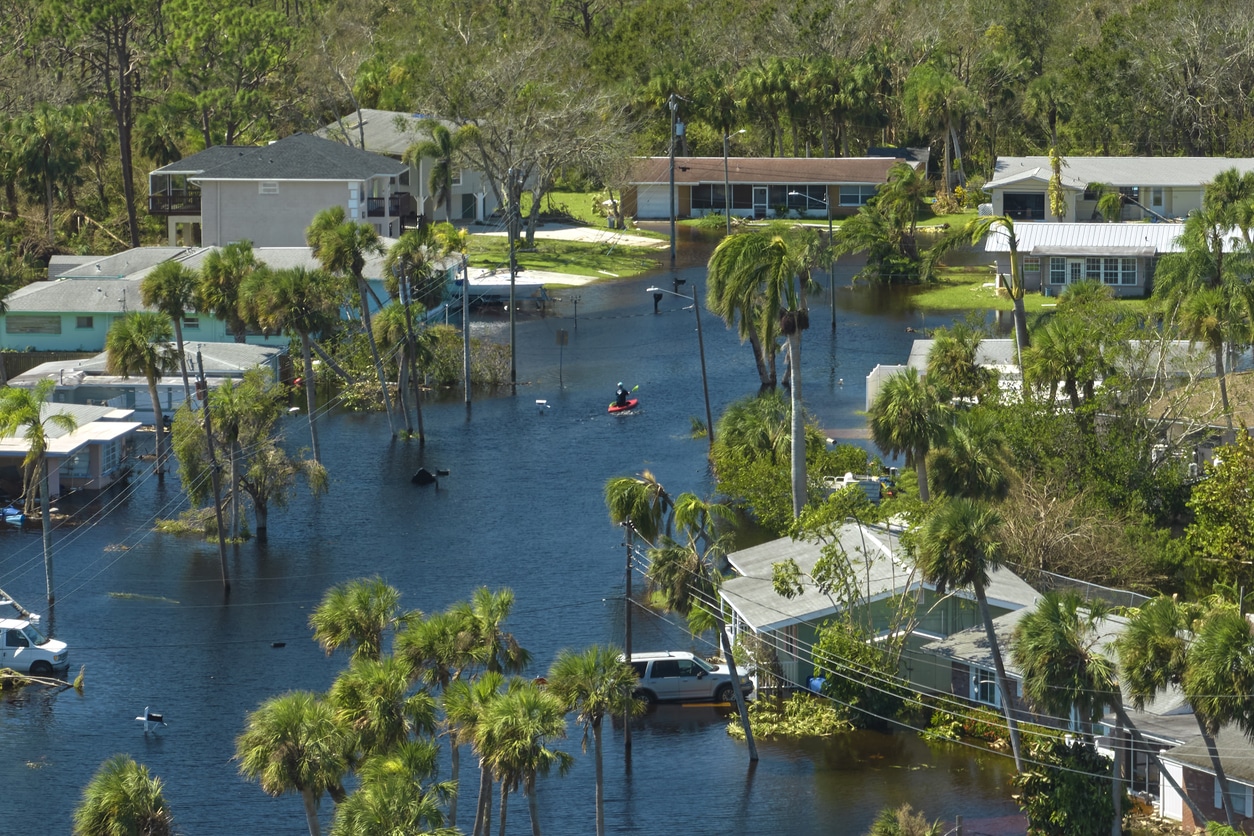A federal program that provides critical flood insurance is set to lapse unless renewed by the end of the month, potentially stranding new home buyers in need of coverage.
The National Flood Insurance Program provides a safety net for the increasing number of communities that are vulnerable to flooding and might not have access to any other coverage. Now lawmakers are deadlocked over extending the program, which is facing a backlash over a new pricing model intended to make premiums better reflect a home’s risk.
“The only thing worse than what we have is nothing,” said Sen. John Kennedy (R., La.), whose bill to extend the program by one year was blocked last week.
Congress may find a way to renew the program before it lapses on Oct. 1 or shortly after, as in years past, through legislation that is either separate from or part of the budget fight to prevent a government shutdown. The deadline comes at a critical juncture for the 55-year-old program.
The Federal Emergency Management Agency is being sued by 10 states that want to block the program’s revamped pricing, which was intended to help address its decadeslong funding shortfalls and to prevent homeowners in relatively low-risk areas from continuing to subsidize those in flood-prone ones.
The new pricing will take several years to be fully implemented and result in rate hikes for two-thirds of the program’s 4.7 million policyholders, according to the Government Accountability Office. The states suing FEMA say the new rates could drive people out of flood zones, slam property values and even lead to people losing their homes because they can no longer afford insurance that is a condition of their mortgages.
Average annual premiums will eventually more than double in 12 coastal and landlocked states under the revamp, according to a report this week by First Street Foundation, a research firm. The county with the steepest increase is in Louisiana, where the average premium in Plaquemines Parish will surge more than sixfold to $5,431 from $842 in coming years once the new premiums are in full effect, according to First Street.
“Flood insurance policies have become their own natural disaster,” said Jeff Landry, the attorney general for Louisiana who is leading the states’ lawsuit.
Other states where average premiums more than doubled include hurricane-prone Florida and Mississippi, as well as Kentucky, South Dakota and West Virginia.
David Maurstad of the National Flood Insurance Program said that FEMA doesn’t have the authority to consider affordability when setting premiums but that the agency “continues to work with Congress to examine flood insurance affordability options.”
Previously, premiums were based on an outdated model that FEMA said no longer accurately reflected a home’s risk of flooding. Critics said the cheap insurance encouraged people to buy pricey homes in flood-prone areas, in part by repeatedly bailing them out.
More than 3,000 properties had 10 or more claims from 1978 through 2022, according to FEMA. Nearly two-thirds of those were in five states: Louisiana, Texas, New Jersey, Missouri and New York.
To help shore up its funding, FEMA last year asked Congress to consider letting it drop coverage on properties that received four or more claim payments of at least $10,000. Congress has yet to take any action.
Since the program caps rate increases at 18% a year, it will take until 2037 before the new premiums are being charged for 95% of current policies, the GAO estimated. That delays the full impact of rate increases for several years for policyholders but leaves the program with $27 billion less in premium revenue than it otherwise would have.
Already, the program’s failure to charge adequate rates for years has dug it deep into debt. It is paying $1.7 million in interest a day to the Treasury on $20.5 billion in loans, even after Congress forgave it $16 billion of debt in 2017.
Meanwhile, the program has lost almost a million policyholders since 2009, despite floods becoming more frequent and costly. In counties affected by Hurricane Idalia last month, fewer than one in five homes on average had federal flood insurance, according to an analysis for The Wall Street Journal by private insurer Neptune Flood.
A failure by Congress to renew the program wouldn’t stop claims from being paid. But it could affect home purchases in high-risk flood zones and derail thousands of closings in the peak of hurricane season, according to the Insurance Information Institute, an industry group.
In the last six years, lawmakers have allowed the program to lapse briefly three times, according to FEMA.
It isn’t yet clear how lawmakers will try to extend the program. A renewal could be included as a provision in any temporary funding legislation to keep the government running.
Sen. Kennedy of Louisiana is also expected to again try and pass his legislation for an extension.
His attempt last week was blocked by Sen. Mike Lee (R., Utah), who said he wasn’t willing to agree to “yet another hollow promise” of reforms.
“It’s a broken subsidy program,” Lee said.













